Rhus copallinum – Winged Sumac

The Winged Sumac (Rhus copallinum) is a native plant with edible fruits. The winged sumac is in the same family as cashews, poison ivy, mangoes, and pistachios. Winged sumac has compound leaves which turn red in the fall. Fruit clusters can persist throughout the winter. All berries of red sumacs are edible. The berries produce […]
Vitis aestivalis – Summer Grapes
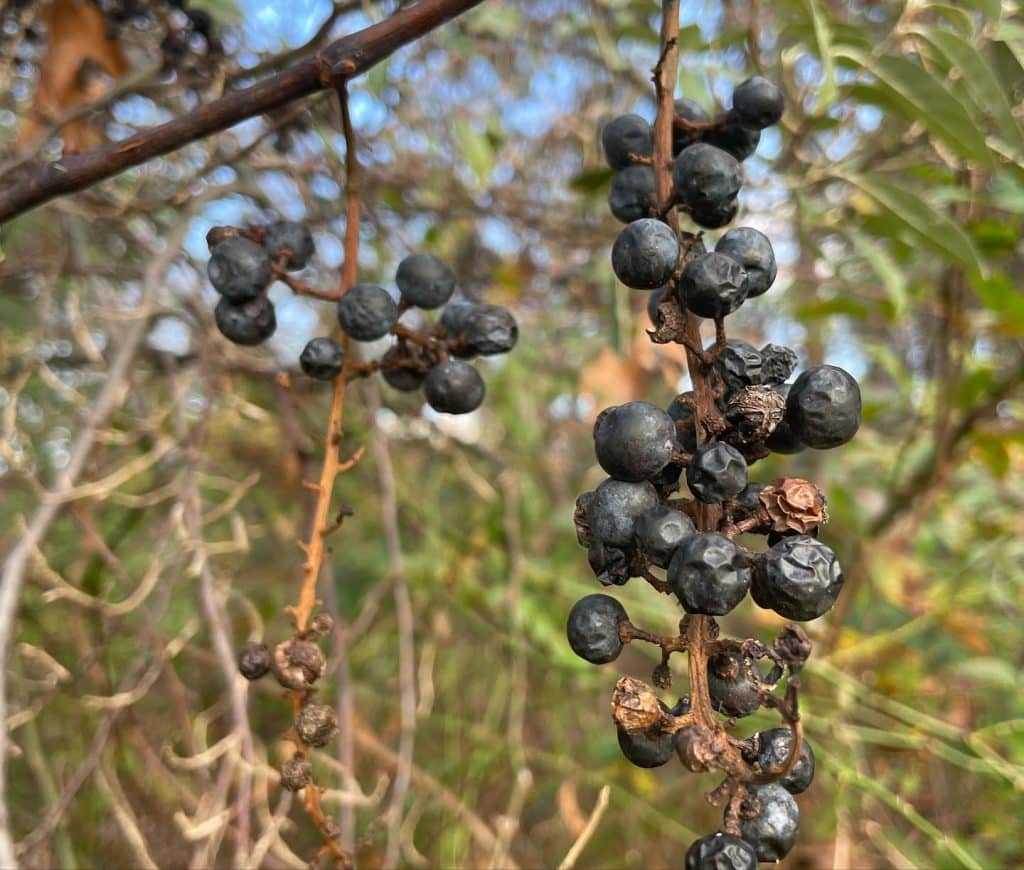
Summer grapes (Vitis aestivalis) are a native grape species that ripen in early November, when the berries turn deep purple. The first frost helps to sweeten the grapes. Wild grapes can be identified by their large three-lobed leaves, and mature dark brown, shaggy bark. Wild grapes can be enjoyed raw or turned into jelly. […]
Carya ovata – Shagbark Hickory
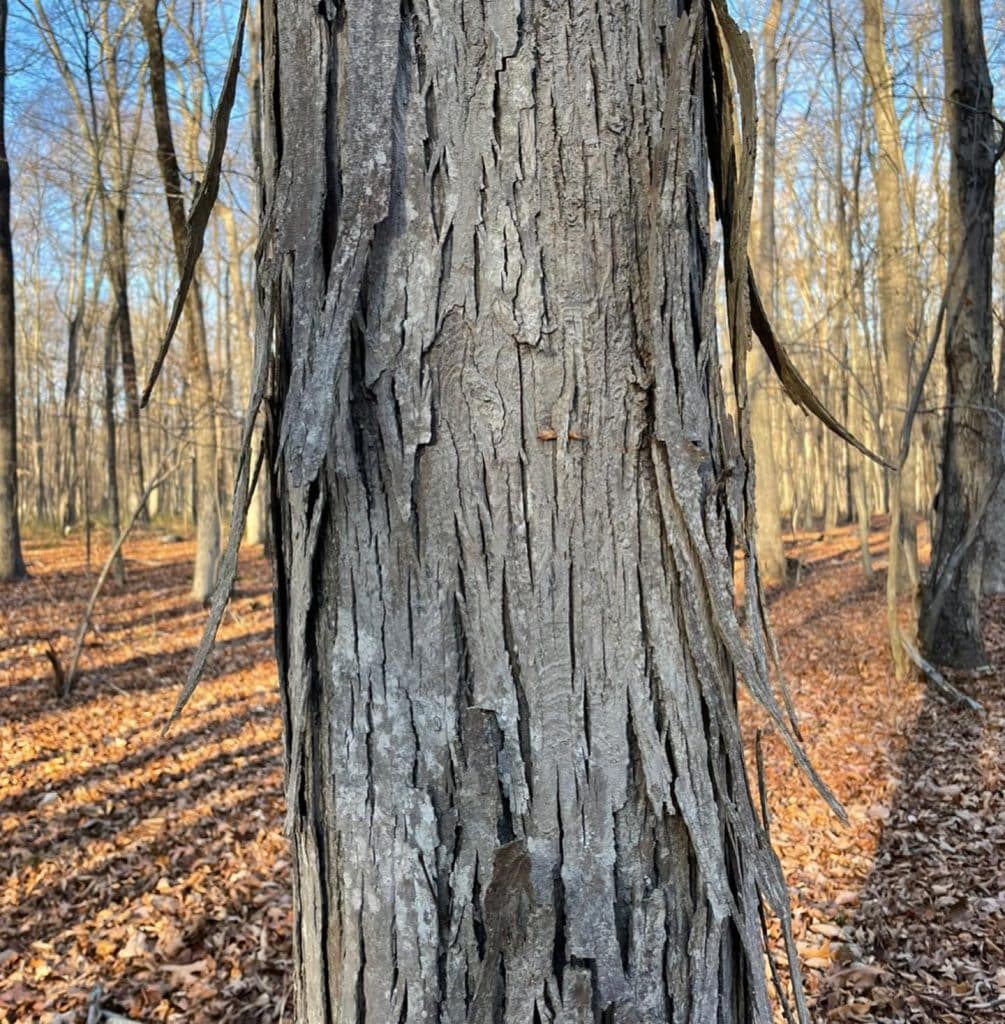
Shagbark hickory (Carya ovata) is a native tree with edible nuts and bark that can be used to make a maple syrup substitute. Shagbark hickory is one of the easiest trees to identify with its bark that peels off the tree. In the summer, the tree has leaves with five leaflets. In the fall, […]
Albizia julibrissin – Mimosa Tree
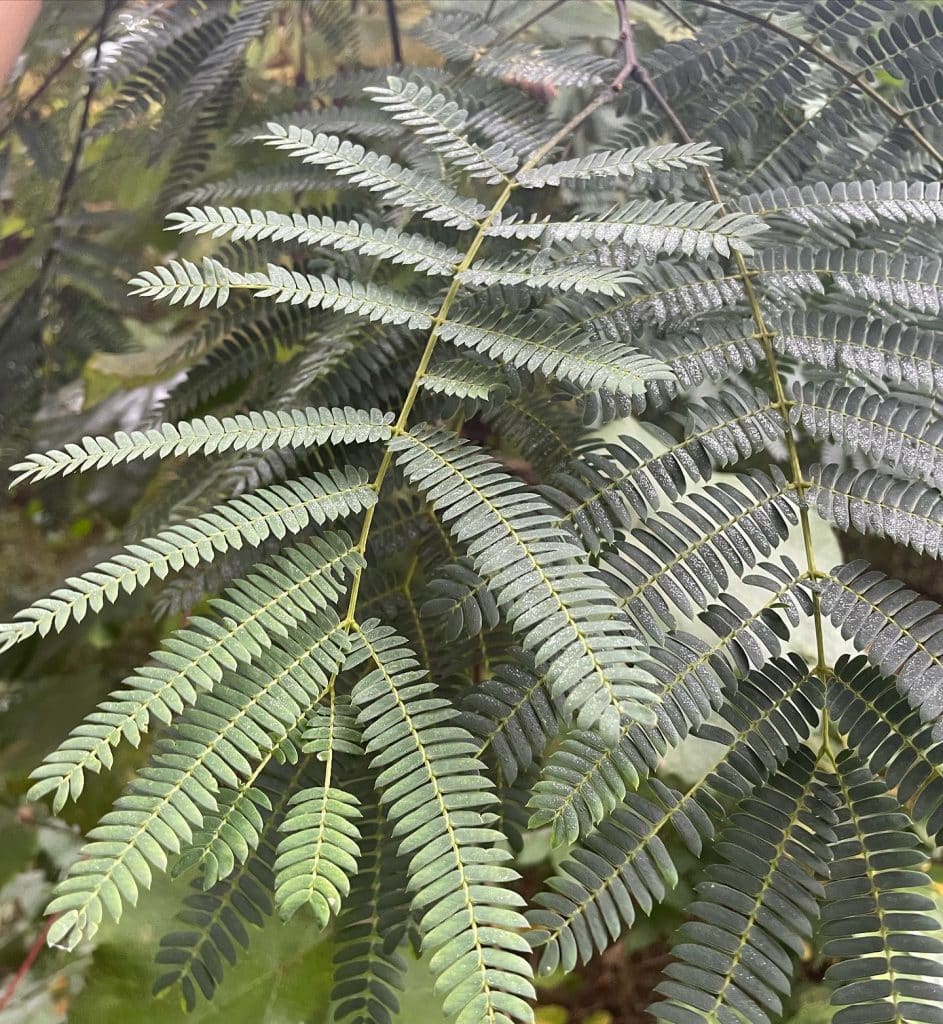
The Mimosa tree (Albizia julibrissin) is an invasive tree from Asia and the Middle East. The mimosa tree has fern-like leaves and silky pompom flowers in the summer. The flowers become flat paper brown seed pods in late summer. Young mimosa leaves can be eaten cooked or dried and used for tea. Blossoms can be […]
Malus spp. – Wild Apples

Wild Apples (Malus spp.) are apple trees that grew from seed. The apples are considered crab apples if the fruit is less than 2 inches in diameter. There are over 40 species of crab apples across the world and 4 species that are native to the United States. Two of these species can be found […]
Lindera benzoin – Spicebush
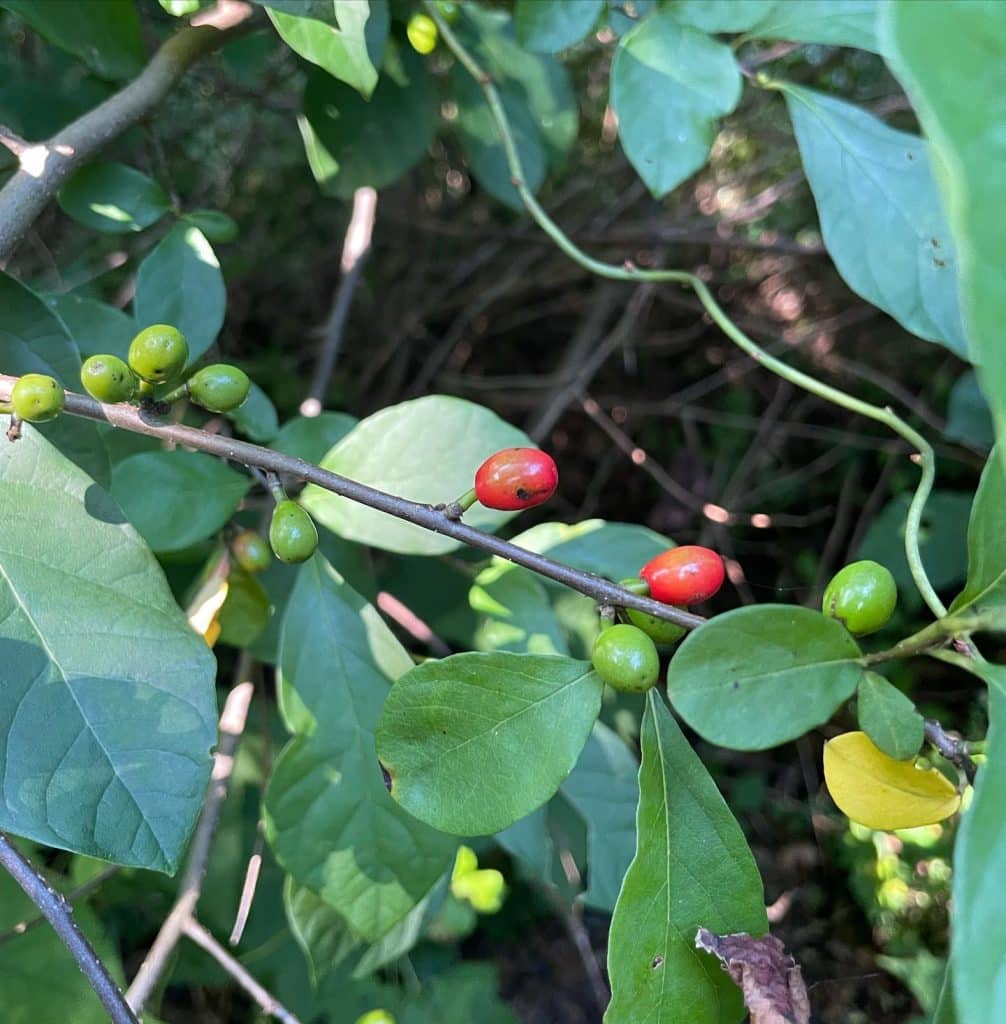
Spicebush (Lindera benzoin) is a native deciduous shrub that can be found in moist areas. Spicebush can be identified by its alternative, glossy leaves with smooth margins. The female plants produce glossy, red berries in early fall. The berries have a large seed inside. The shrub can grow up to 15 feet tall. Fruits and […]
Pleurotus ostreatus – Winter Oysters

The Winter oyster mushroom (Pleurotus ostreatus) is the most commonly cultivated mushroom, but is also commonly found in the wild. Winter oysters, or Pearl oysters, can be identified by their tan cap, stubby off-center stem, and decurrent gills. Winter oysters tend to have a darker cap and grow larger than the summer oyster species (Pleurotus […]
Ischnoderma resinosum – Resinous Polypore

The Resinous polypore (Ischnoderma resinosum) is a saprobic fungus that can be found on fallen hardwoods from September until the first hard frost. The resinous polypore is thick and fleshy when young with a pale brown cap and thick white margins. The mushroom toughens and the cap becomes a darker brown with age. The cap […]
Entoloma abortivum – Shrimp of the Woods
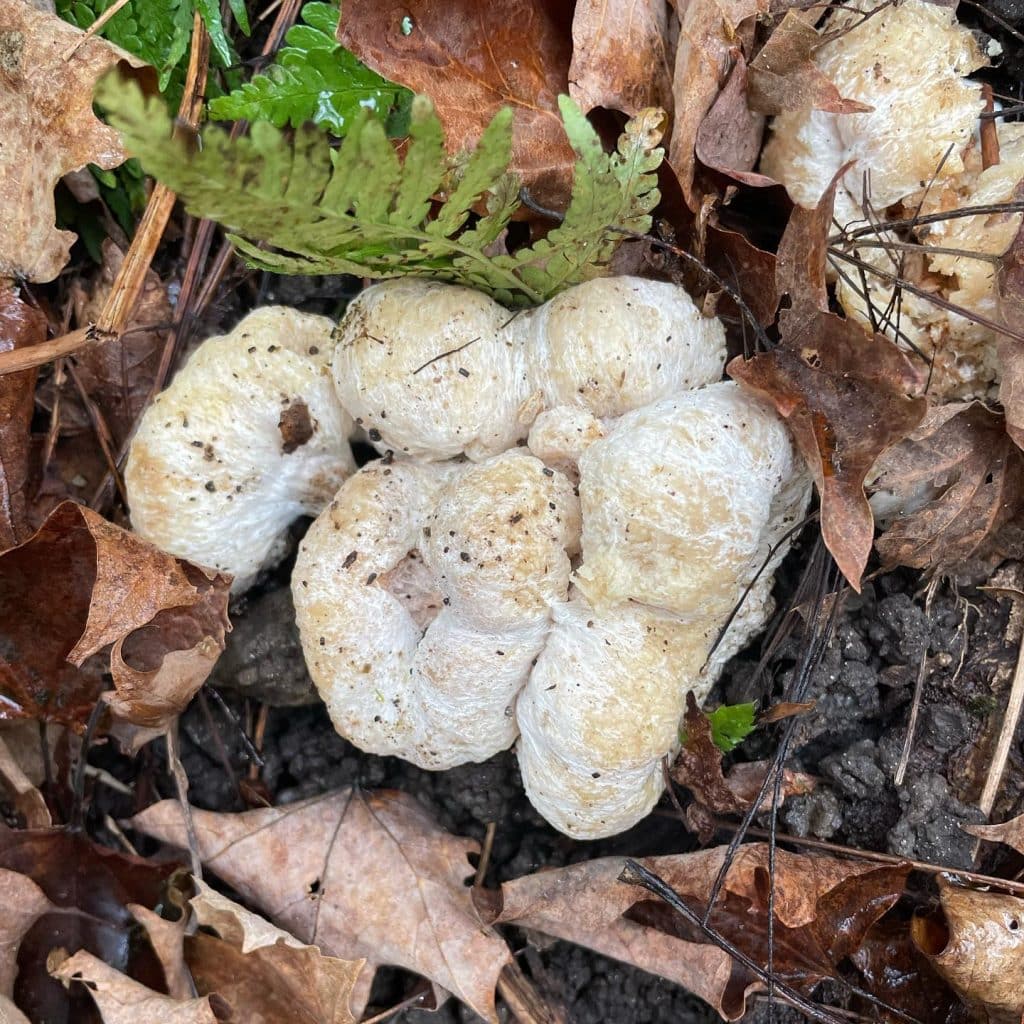
Shrimp of the Woods (Entoloma abortivum) is a unique looking mushroom that develops when an Entoloma fungus parasitizes a honey mushroom (Armillaria sp.). Shrimp of the woods can be found from September-November in decaying forest material. Shrimp of the woods have a folded, twisted, brain-like shape with a pink interior. They have no gills. The […]
Hypholoma lateritium – Brick Caps

Brick Caps (Hypholoma lateritium) are edible mushrooms that can be found on hardwood stumps and deadwood from August-November. They can be found throughout the United States but are most common in the Northeast. Brick caps grow in bouquet-like, dense, tight clusters. The cap has a brick red color in the center, fading to a lighter […]
Ganoderma applanatum – Artist’s Conk
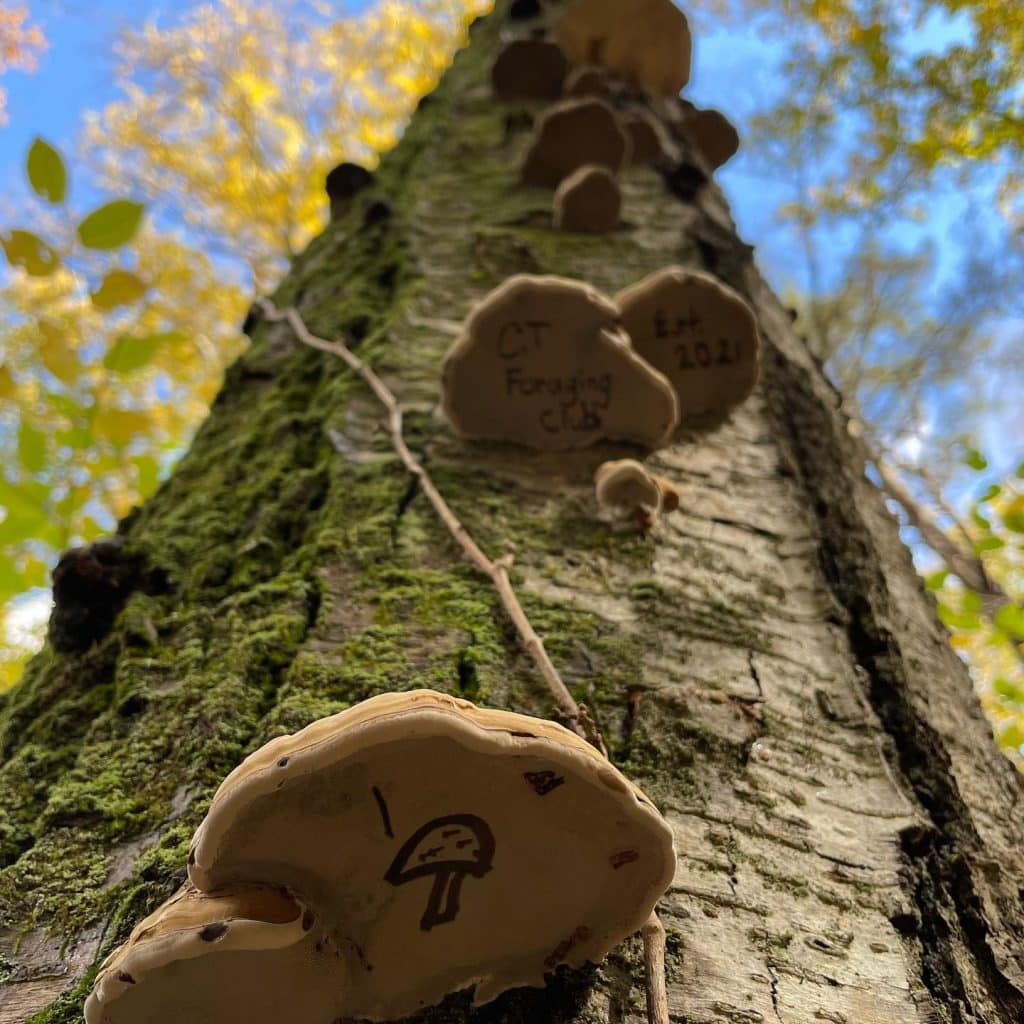
Artist’s Conk (Ganoderma applanatum) is a common mushroom that can be found worldwide. It can be found on living and dead trees, primarily hardwoods. Artist’s conk is both a parasitic and saprobic fungus. It is particularly known to decompose beech and poplar trees. Artist’s conks are perennial mushrooms that can grow up to 2 feet […]
Fomes fomentarius – Hoof Fungus

Hoof fungus (Fomes fomentarius) is one of the two mushrooms that was found with Otzi the iceman who lived 5,000 years ago in the Italian alps. Hoof fungus, also known as Tinder fungus, can be found growing on living and dead birch, beech, and sycamore trees. It is a perennial fungus, first emerging in the […]
Clitocybe nuda – Wood Blewits
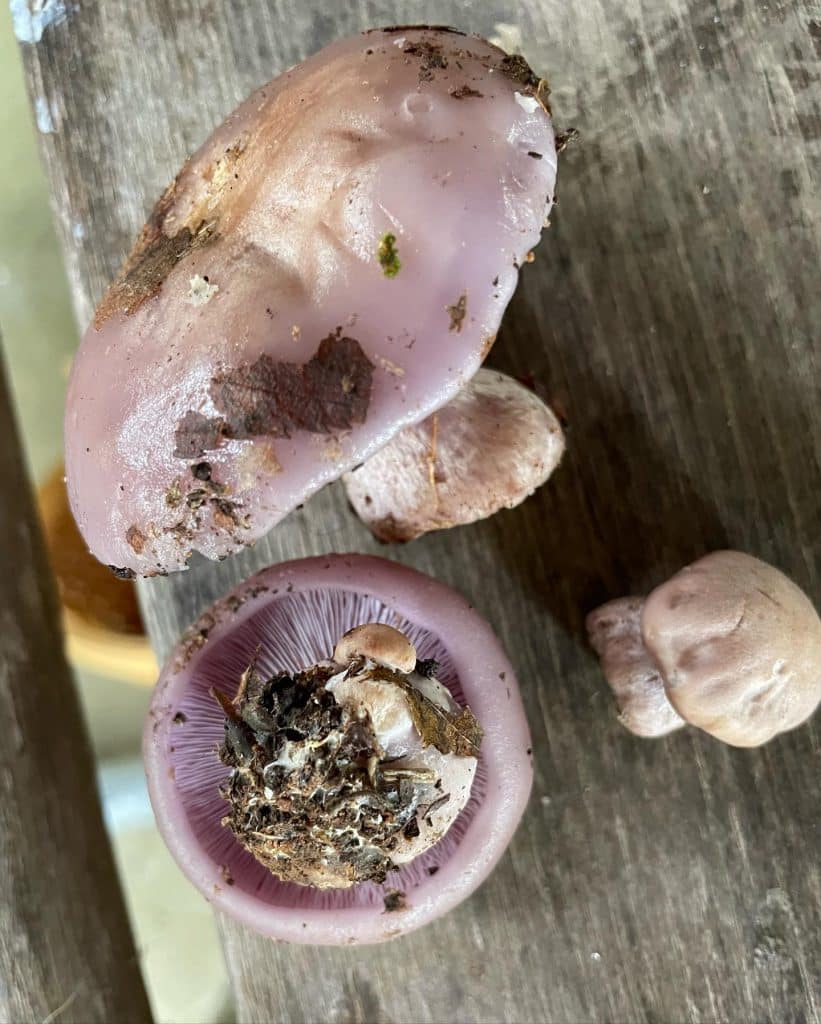
Wood Blewits (Clitocybe nuda) are edible mushrooms that can be found in compost heaps, wood chips, and leaf litter after heavy rains. The mushrooms can fruit multiple times per season from fall to early winter. Wood Blewits have suede-like caps that are purple when the mushroom is young, turning tan then white as it ages. […]
Pleurotus pulmonarius – Italian Oyster Mushrooms

Italian oyster mushrooms (Pleurotus pulmonarius) are edible oyster mushrooms that grow in New England from summer-fall. These mushrooms tend to be smaller and whiter than the Pearl Oyster mushroom (Pleurotus ostreatus) which prefers cooler weather. Oyster mushrooms are among the most cultivated and consumed edible mushrooms in the world. Oyster mushrooms are identified by their […]
Trametes betulina – Gilled Polypore

The Gilled Polypore (Trametes betulina) is a turkey tail (Trametes versicolor) look-alike with medicinal properties. The gilled polypore, also known as birch mazegill, is a unique polypore since it has gill-like ridges under its cap. The gilled polypore is a saprobic fungus which is most often found on decaying hardwood, although it can be occasionally […]
Hypomyces lactifluorum – Lobster Mushrooms
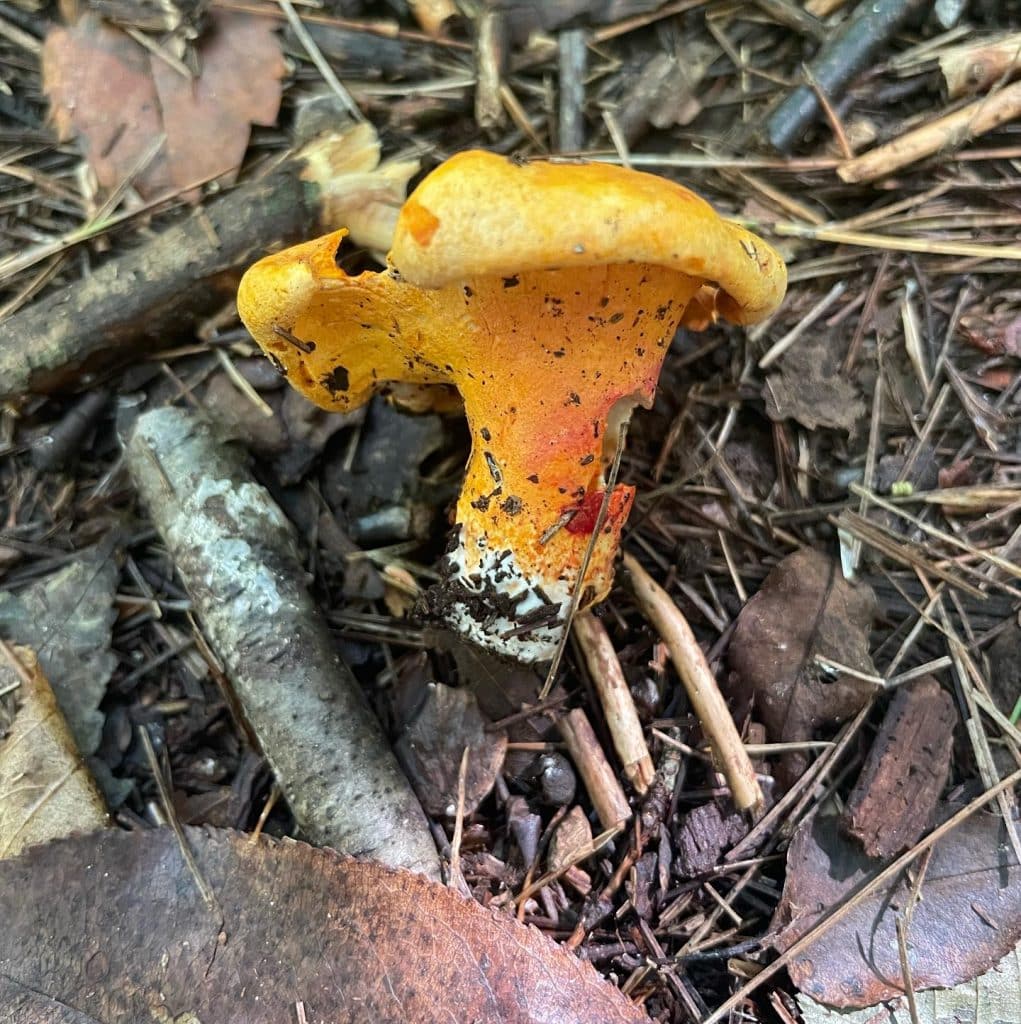
Lobster mushrooms (Hypomyces lactifluorum) are a parasitic mold that takes over a Russula or Lactarius mushroom, turning the mushroom red and improving the texture and taste. The mold most commonly infects Russula brevipes and Lactarius piperatus mushrooms. Lobster mushrooms grow in the ground, near hardwoods or hemlocks. They can be found July-October. Lobster mushrooms can […]
Ganoderma curtisii – Golden Reishi
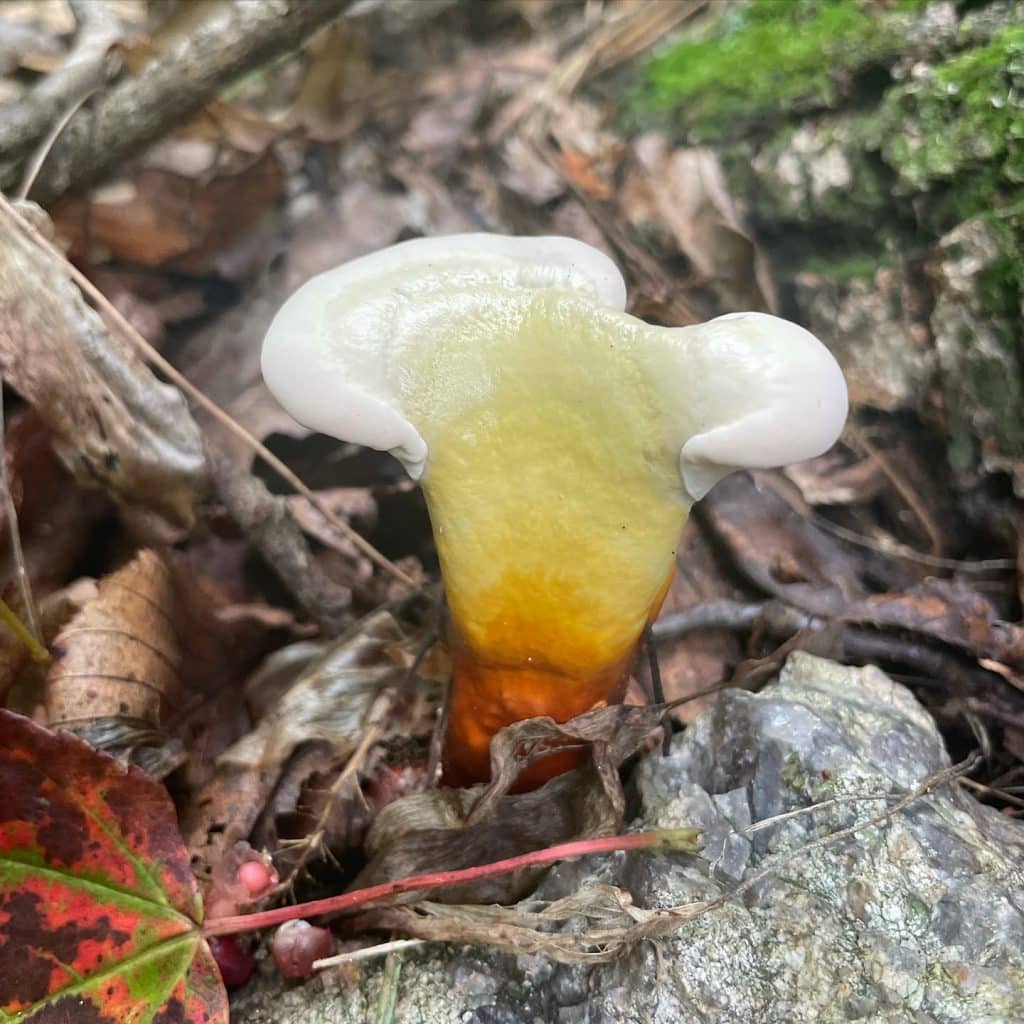
The Golden Reishi (Ganoderma curtisii) is a saprobic or parasitic mushroom. It can be found on living or dead hardwood trees east of the Rocky Mountains. The golden reishi fruits May-November. Ganoderma curtisii used to be classified as part of the Ganoderma lucidum complex. Ganoderma lucidum is now known to be a primarily European species, […]
